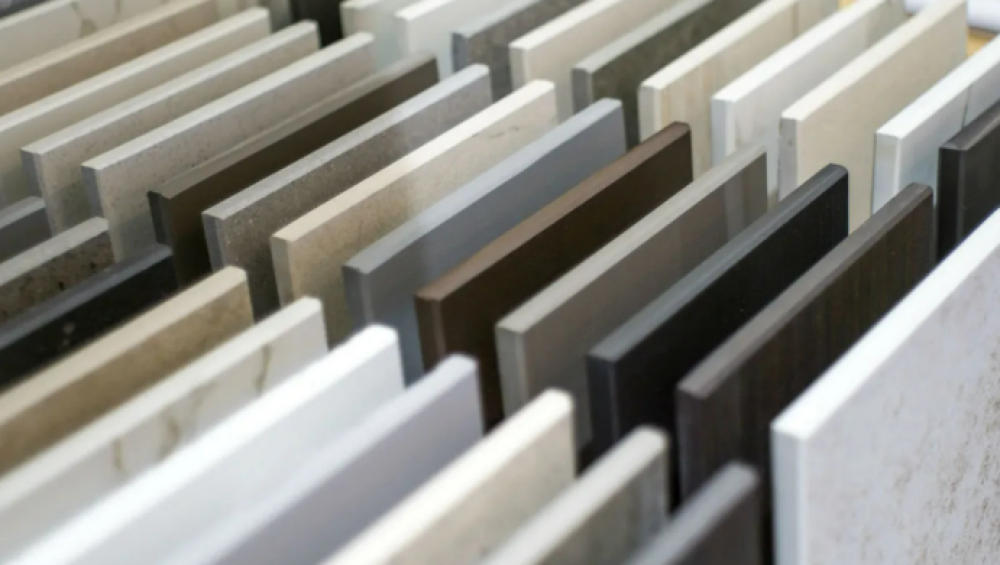We have gone through many trends in wall and floor decorations, and now we have reached one of the most elegant of these trends, which is the marble alternative.
Are you looking for decorations that give your home a touch of luxury and sophistication? Do you want an easy-to-clean and durable material?
So, marble alternative is the perfect choice for you.
But what is a marble alternative? How is a marble alternative installed? What are the uses and benefits of a marble alternative?
As pioneers in the field of interior and exterior home decorations, we at Al-Ghamlas have taken it upon ourselves to answer all these questions and introduce you to all the wonderful and elegant options for your home decorations.
Including marble alternatives, so that you can enjoy beauty and comfort in every corner of your home.
What is the alternative to marble?
Before we get into the details, let's first learn what a marble alternative is.
Marble alternative is an engineered material that mimics the look and properties of natural marble, but has additional benefits such as increased durability and resistance to stains and scratches.
Marble alternative is made from a mixture of minerals, pigments and resins, giving you a finished product that has the same high-end look as marble, while being a strong and durable material.
What is marble substitute used for?
Marble alternative is used in many applications, including:
- Kitchens: as floors and worktops.
- Bathrooms: such as floors and bathtub surfaces.
- Walls: To add a touch of luxury to interior and exterior walls.
- Flooring: In high-use areas such as hallways and offices.
- Plumbing fixtures: such as kitchen and bathroom sinks.
Benefits and features of marble alternative
Marble alternative has many advantages that make it an ideal choice for you, including:
- Durability and Strength: Resists scratches, stains, and acids, making it ideal for high-use areas such as kitchens and bathrooms.
- Easy to maintain and clean: It can be easily cleaned with mild detergents, and does not require special care.
- Variety: Available in a variety of colors and patterns, allowing you to choose the design that suits your taste and home decor.
- Stain Resistance: It is not affected by most stains, making it easy to clean and maintain.
- Heat Resistance: Withstands high temperatures, making it ideal for use in kitchens.
- Sound insulation: Helps insulate sound, providing a quieter environment.
- Price: Generally, the price of marble substitute is lower than the price of natural marble.
- Light weight: It is easy to transport and install compared to natural marble.
- Eco-friendly: Some types of marble alternative are made from recycled materials.
In short, marble alternative combines beauty, durability, and high performance, making it an ideal choice for homes, offices, and businesses.
Types of marble alternatives
There are many types of materials that can be called " marble alternatives ", and each type has its own advantages and disadvantages. The most famous types are:
- Quartz: It is highly hard and resistant to scratches and stains, and is available in a variety of colors and patterns.
- Acrylic: Flexible and easy to shape, it is ideal for those who like complex shapes.
- Ceramic and porcelain: They are durable and water resistant, and are widely used for floors and walls.
- Engineered stone: Made from a mixture of sand, resins and pigments, it mimics the look of natural stone.
What are the methods of installing marble alternative?
Marble alternative installation methods vary depending on the type of material used, but in general, the installation process includes the following steps:
- Surface preparation: The surface must be flat, clean and free from any impurities.
- Measurement and Cutting: The surface is accurately measured and the marble alternative panels are cut to the required sizes.
- Adhesion: Marble substitute panels are glued to the surface using a special adhesive.
- Finishing: Joints and edges are finished to give a beautiful finished look.
When to install marble alternative
Marble alternative can be installed at any time, whether it is when building a new home or renovating an old one. It can also be used in commercial projects such as restaurants, hotels and offices.
Tips for choosing and caring for marble alternatives
When choosing a marble alternative, several factors must be considered to ensure the best possible result.
First, decide where you will use the marble alternative. For example, kitchens need a material that is more resistant to stains and heat than bathrooms.
Second, compare different types of marble alternatives in terms of price, appearance, and durability.
Finally, consult an interior design professional for advice and guidance.
Marble alternative care:
To get the most out of your marble alternative and maintain its shine and beauty, follow these tips:
- Regular Cleaning: Use mild, non-abrasive cleaners to clean the marble replacement surface regularly.
- Avoid strong chemicals: Avoid using strong chemicals and acids that may damage the surface.
- Use coasters: Use coasters under hot pots and sharp objects to protect the surface from scratches.
- Immediate Repair: If any scratches or damage occur, repair them immediately to prevent the problem from getting worse.
Choosing the right care for your marble alternative will ensure that it maintains its beauty and shine for many years to come.
Al-Ghamlas provides you with the most luxurious and finest types of marble alternatives and other wall decorations , so be sure to check out the options we provide, and we promise you will not regret it.
In conclusion , marble alternative is an ideal choice for those looking for a luxurious look and high durability at affordable prices.
With a wide variety of types and designs, you can easily find the perfect marble alternative for your home or office.

